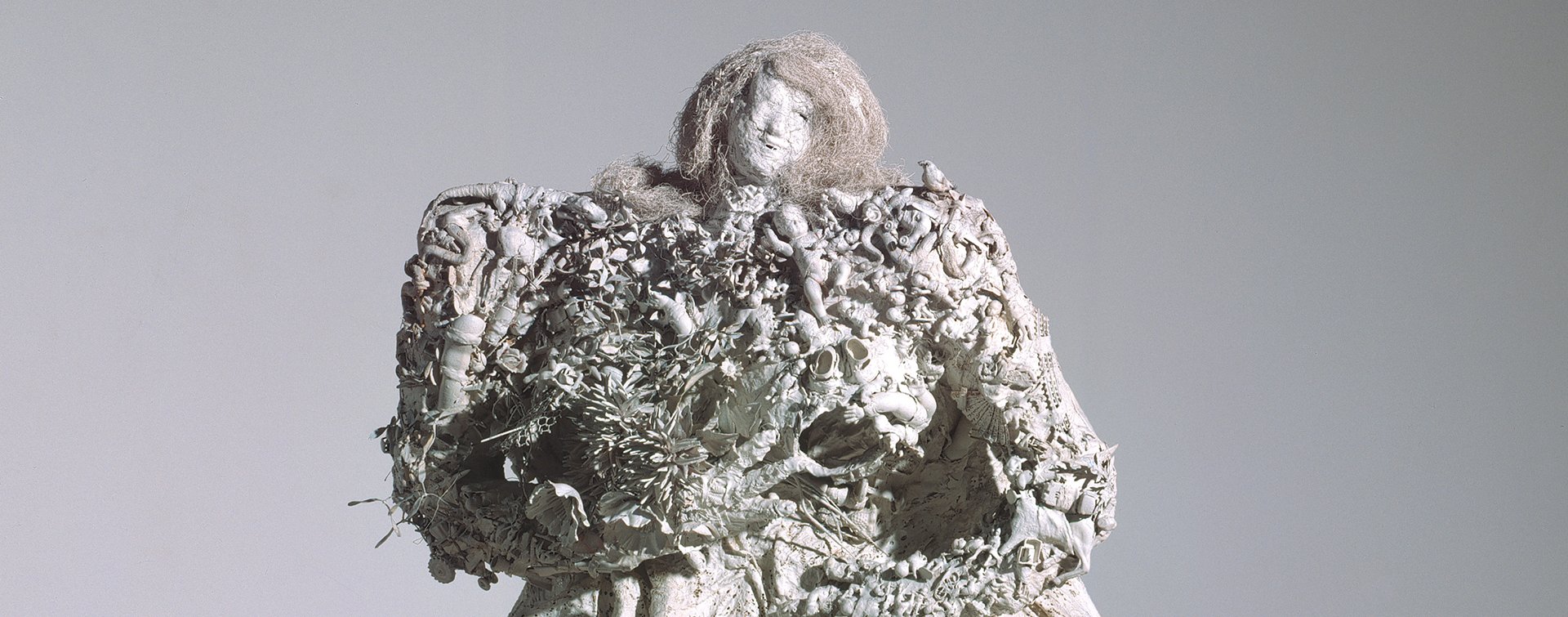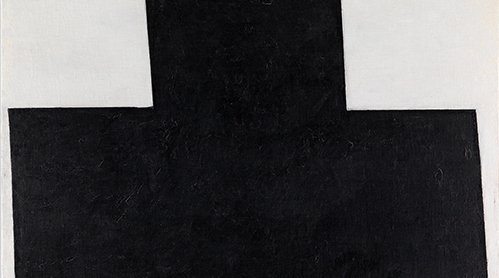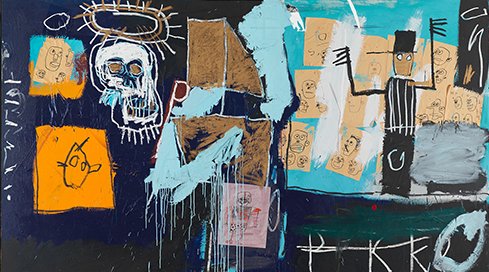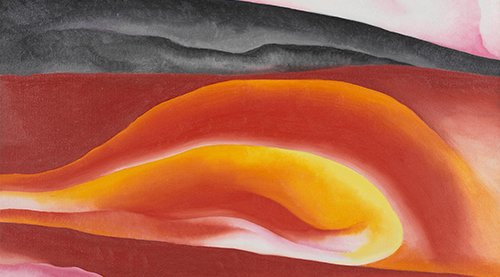
Focus on... Niki de Saint Phalle’s “La Mariée” (The Bride)
In 1963 and 1964, thinking back to her mother trapped inside a value system against which she had not rebelled, and even as she herself became a wife and mother at a very young age, Niki de Saint Phalle designed a series of works that denounced the various statuses attributed to women: wife, birthing mother, devourer of children, whore and sorceress, at the former Auberge du Cheval Blanc in Soisy-sur-École, where she was living with partner Jean Tinguely… While some of the representations merged with the support-picture, they soon asserted their independence, emerging from the surface.
A pathetic, suffering bridal figure expresses the artist’s rebellion against rules, hierarchy and taboos in any shape or form, apparently announcing the end of masculine domination.
As a giant, sad doll dressed in a ceremonial robe and carrying a bouquet, The Bride seems burdened with duty, letting out an endless shriek of despair. Countless elements agglutinated in the plaster – dolls, plastic bathers that have been yanked apart, bouquets of artificial flowers and random junk – confer the character with a grating yet burlesque tone, upsetting the symbolic purity and romance traditionally associated with the image of a bride.
Other elements are sometimes associated: the horse she rides side-saddle in The Horse and the Bride, 1963-1964 and a tree under which she succumbs to sleep in The Bride under the Tree, 1963-1964. A pathetic, suffering bridal figure expresses the artist’s rebellion against rules, hierarchy and taboos in any shape or form, apparently announcing the end of masculine domination. ◼
Excerpt from the catalogue Collection art contemporain - La collection du Centre Pompidou, Musée national d'art moderne, Paris, Centre Pompidou, 2007
Related articles
Niki de Saint Phalle, La Mariée (1963)
Grillage, plâtre, dentelle encollée, jouets divers peints,
226 x 200 x 100 cm
© Niki Charitable Art Foundation / Adagp, Paris
© Centre Pompidou, Mnam-Cci /Dist. Rmn-Gp




